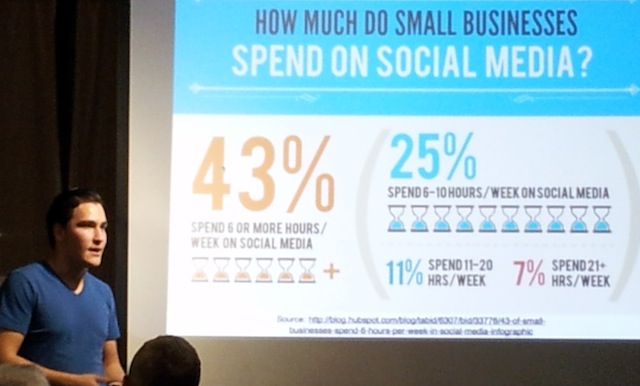Introduction
Overview of Roblox
Roblox is not just a gaming platform; it’s a sprawling universe where creativity meets technology. Launched in 2006, Roblox has evolved into a leading online platform for both gaming and user-generated content. It allows players to create, share, and play games within its virtual world, which is populated by millions of unique experiences and interactions. The visual style of Roblox is both distinctive and versatile, characterised by its blocky, pixelated aesthetic. This style is evident in everything from avatars to game environments, making it a unique canvas for artistic expression.
Purpose of the Article
This article aims to provide a thorough, step-by-step guide on how to draw Roblox characters and elements. Whether you’re a fan of Roblox or an aspiring creator, this guide will walk you through the essentials of drawing Roblox’s iconic avatars, game items, and environments. By the end of this article, you’ll have the knowledge and techniques needed to bring your Roblox-inspired creations to life.
Understanding Roblox’s Visual Style
Key Characteristics of Roblox Graphics
Roblox’s graphics are instantly recognisable. The game’s blocky, pixelated aesthetic is a significant part of its charm and accessibility. This visual style includes:
- Blocky Avatars: Roblox avatars have a distinct cubic appearance, with a block-shaped head, torso, and limbs. This simplicity allows for extensive customisation, with players able to change their avatars’ clothes, accessories, and even facial expressions.
- Simple Game Items: The items in Roblox games often follow a similarly simplistic design, using geometric shapes to create weapons, tools, and other interactive objects.
- Minimalistic Environments: Environments in Roblox games are designed with a focus on functionality over realism. They feature blocky structures and simple textures, which facilitate easy modification and creativity.
Examples of Popular Roblox Characters
Several characters and avatars have become icons within the Roblox community. For instance:
- Default Roblox Avatar: The classic Roblox avatar, often seen in tutorials and guides, is a good starting point for beginners. It typically features a blocky head, torso, and limbs, with customizable features such as hair, clothing, and accessories.
- Roblox Game Characters: Characters from popular games like “Adopt Me!” or “Brookhaven” have their unique styles but retain the fundamental blocky aesthetic of Roblox. These characters might include elaborate outfits and distinctive features that reflect their game’s theme.
Basic Drawing Tools and Materials
Digital Drawing Tools
For those opting for a digital approach, the following tools are recommended:
- Tablets: Devices like the Wacom Intuos or Apple iPad Pro with Apple Pencil provide a versatile platform for drawing. Tablets allow for precision and flexibility in digital art.
- Software: Popular drawing software includes Adobe Photoshop, Procreate, and Clip Studio Paint. These programs offer various brushes, layers, and effects that can enhance your drawings.
- Workspace Setup: Ensure you have a comfortable, well-lit workspace with a tablet stand or drawing board to maintain good posture and reduce strain during long drawing sessions.
Traditional Drawing Tools
If you prefer traditional drawing methods, here’s what you’ll need:
- Pencils: Graphite pencils of various hardness (e.g., 2B, 4B) are ideal for sketching. Use softer pencils for shading and harder ones for fine lines.
- Erasers: A good-quality eraser will help clean up your sketches and correct mistakes. Kneaded erasers are particularly useful for detailed work.
- Paper: Choose smooth, high-quality drawing paper for best results. Papers with a weight of at least 200gsm work well for both pencil and ink drawings.
- Pens: For inking, use fine liners or pens with varying nib sizes to achieve clean, precise lines.
Drawing Roblox Characters
Step-by-Step Guide: Basic Roblox Avatar
Step 1: Sketching the Basic Shape
- Head and Torso: Start by drawing a large square or rectangle for the head. Directly below it, sketch a slightly larger rectangle for the torso.
- Arms and Legs: Attach simple rectangular shapes for the arms and legs. Ensure they are proportionate to the torso and head.
Step 2: Adding Details
- Facial Features: Draw facial features such as eyes, a mouth, and any additional expressions. Roblox avatars often have large, expressive eyes and simplistic facial details.
- Clothing and Accessories: Add details like shirts, pants, hats, and glasses. Roblox clothing often includes blocky, oversized elements that fit the game’s aesthetic.
Step 3: Inking and Outlining
- Outlining: Use a fine liner or digital brush to trace over your sketch. Focus on creating clean, smooth lines that define the character’s shape and features.
- Details: Add finer details and refine the lines to capture the character’s distinctive features.
Step 4: Colouring and Shading
- Colours: Select bright, solid colours that match the Roblox style. Use a colour palette that complements the character’s clothing and accessories.
- Shading: Apply basic shading to give depth. Use a lighter shade of the base colour for highlights and a darker shade for shadows. Keep the shading simple to maintain the blocky aesthetic.
Drawing Specific Roblox Characters
Example 1: Drawing a Popular Roblox Game Character
- Character Breakdown: Identify key features of the character, such as specific outfits or accessories that define them.
- Unique Style: Capture the character’s unique style by incorporating game-specific details and colours.
Example 2: Drawing a Custom Roblox Avatar
- Personal Features: Integrate personal or custom features into your avatar, such as unique clothing, hairstyles, or accessories.
- Distinguishing Elements: Add distinctive elements to make your avatar stand out from default or existing designs.
Drawing Roblox Game Elements
Step-by-Step Guide: Roblox Game Items
Step 1: Sketching the Basic Shape
- Structure: Start by drawing the basic geometric shapes that make up the item. For example, a sword can be drawn as a long rectangle with a smaller rectangle for the handle.
- Dimensions: Ensure that the item’s proportions match its intended function.
Step 2: Adding Details and Textures
- Features: Add details like buttons, handles, or decorations that reflect the item’s use and style.
- Textures: Incorporate textures to give the item a more realistic appearance, even within the blocky aesthetic.
Step 3: Inking and Colouring
- Inking: Outline your sketch with clean, defined lines. Use a consistent thickness for a unified look.
- Colouring: Apply colours that match the item’s in-game appearance. Use shading to add depth, keeping it consistent with the Roblox style.
Drawing Roblox Environments
Step 1: Sketching the Basic Layout
- Landscape: Draw the main components of the environment, including ground, structures, and landmarks.
- Perspective: Create a sense of depth by using perspective techniques, such as vanishing points and horizon lines.
Step 2: Adding Details and Features
- Elements: Add details like trees, buildings, pathways, and other environment features.
- Consistency: Ensure that all elements adhere to Roblox’s blocky and simplistic style.
Step 3: Inking and Colouring
- Inking: Outline the environment with clean lines, maintaining consistency with the Roblox style.
- Colouring: Apply colours that match the in-game environment. Use flat colours and minimal shading to keep the aesthetic consistent.
Tips and Techniques for Improving Your Drawings
Practising and Developing Skills
- Regular Practice: The key to improving your drawing skills is consistent practice. Set aside time each day to draw and experiment with different techniques.
- References: Use references from Roblox games and artwork to understand the visual style and details. Study how other artists approach similar subjects.
Common Mistakes to Avoid
- Proportions: Ensure that the proportions of characters and items are accurate. Avoid overly exaggerated features that deviate from Roblox’s style.
- Details: Don’t overcomplicate your drawings with excessive details. Stick to the simple, blocky style that defines Roblox.
Using Tutorials and Resources
- Online Tutorials: Explore online tutorials and video guides that offer step-by-step instructions on drawing Roblox characters and elements.
- Drawing Guides: Utilise Roblox-specific drawing guides to gain insights into the style and techniques used by other artists.
Showcasing and Sharing Your Artwork
Sharing on Social Media
- Platforms: Share your Roblox drawings on social media platforms like Instagram, Twitter, and TikTok to reach a broader audience.
- Tagging: Use relevant hashtags and tags to increase visibility and engagement within the Roblox community.
Creating a Portfolio
- Compiling Work: Create a portfolio to showcase your best Roblox drawings. Include a variety of characters, items, and environments to demonstrate your skills.
- Presentation: Present your portfolio professionally, either digitally or in print, to attract attention from the Roblox community and potential clients.
Conclusion
Recap of Key Points
In summary, drawing Roblox characters and elements involves understanding the platform’s unique visual style, selecting the right tools, and following a structured approach to creating artwork. Whether you’re drawing avatars, game items, or environments, maintaining consistency with Roblox’s blocky aesthetic is crucial.
Encouragement for Continued Creativity
Embrace the opportunity to experiment with your drawing style and contribute your own creative spin to the Roblox universe. Share your artwork, engage with other Roblox fans, and continue to explore new techniques and ideas.
Invitation to Explore More
For those eager to further their drawing skills, explore additional resources and tutorials available online. Engage with Roblox-related communities and forums to exchange ideas and receive feedback on your work. Keep drawing, stay creative, and enjoy the artistic journey within the vibrant world of Roblox.
By following this guide, you’ll be well on your way to mastering the art of drawing Roblox, capturing the essence of this dynamic platform, and showcasing your unique creations to the world.


